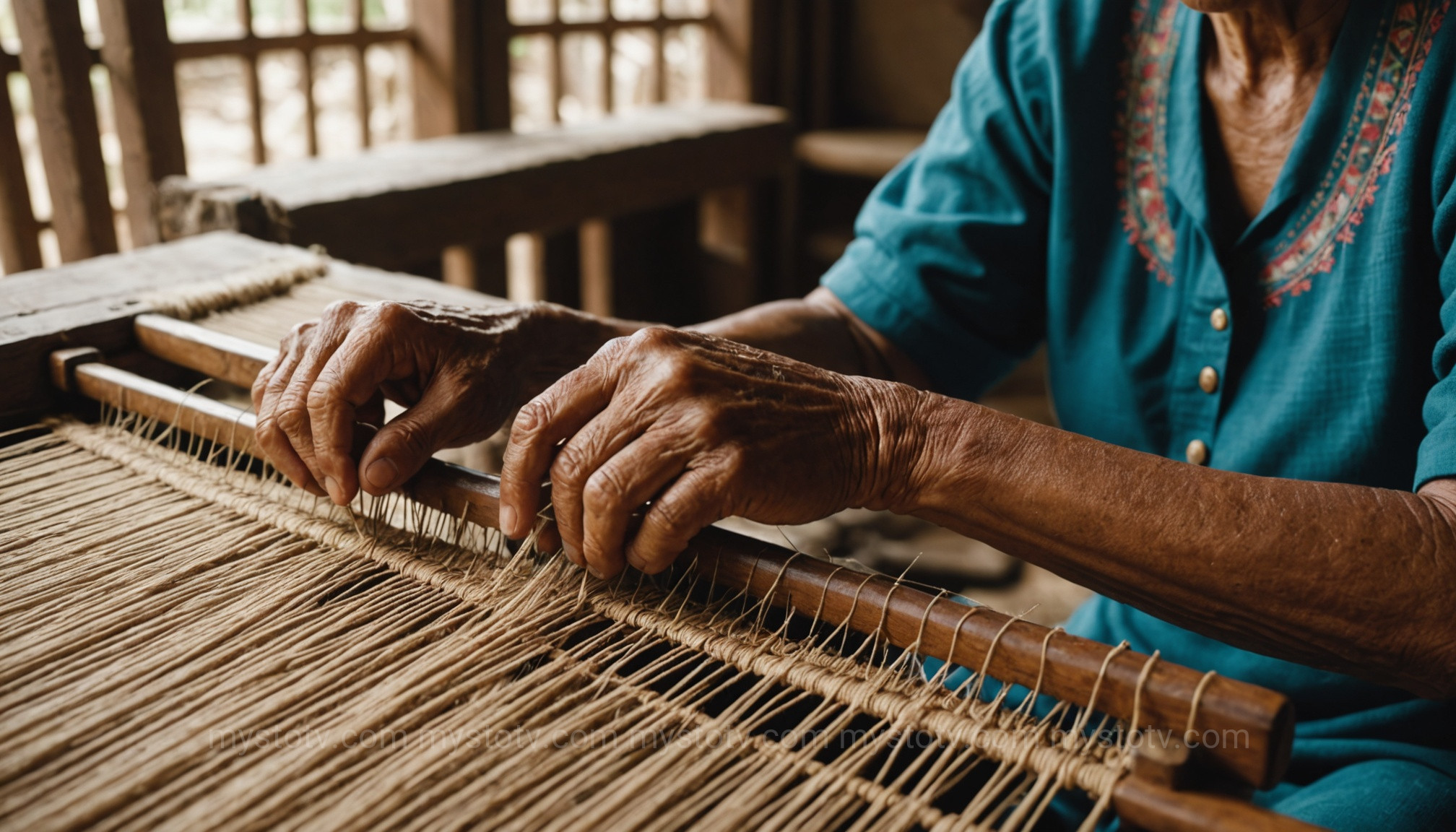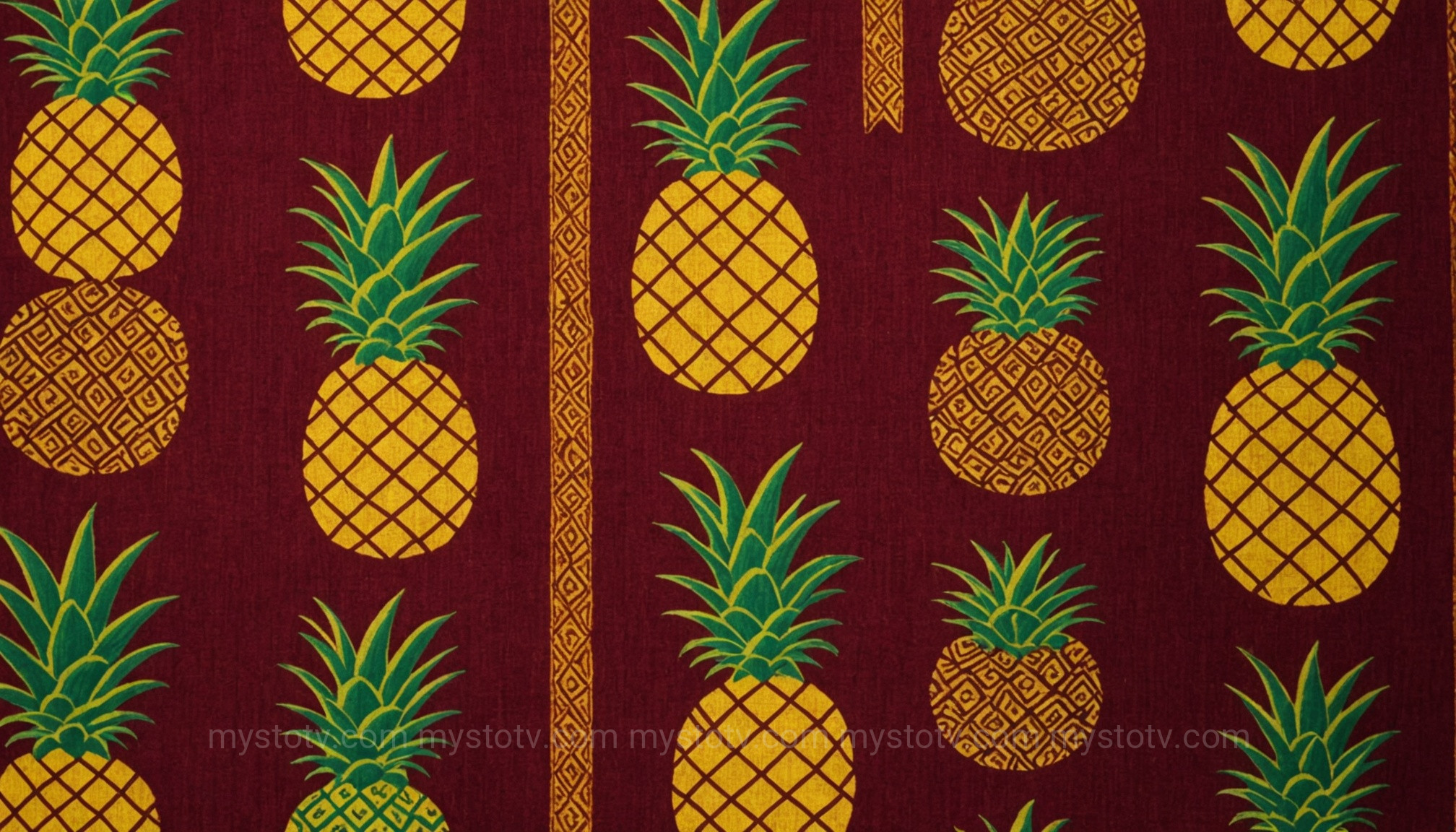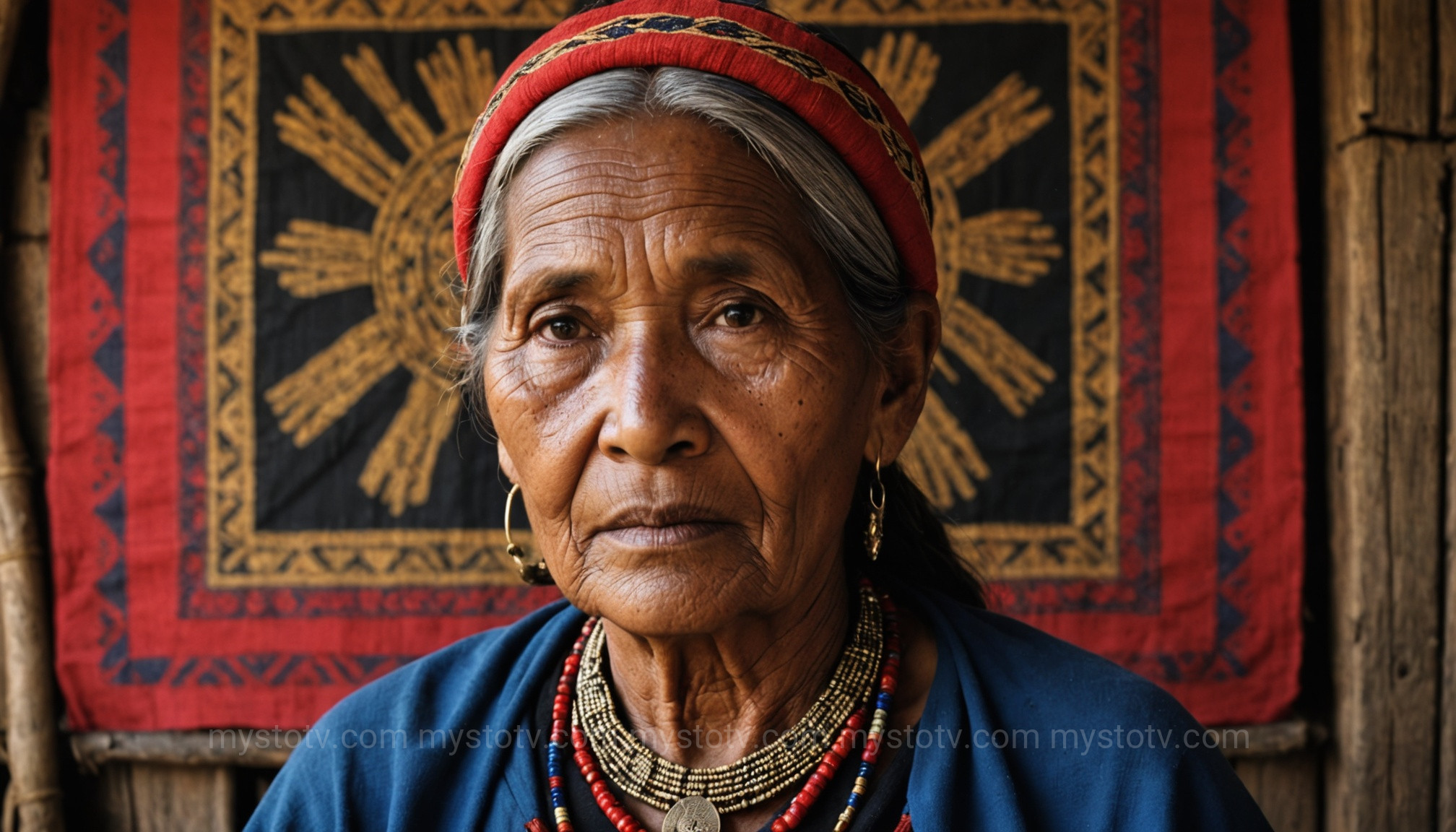I remember the first time I held a piece of T'nalak cloth. It wasn't in a sterile museum display but in a small, bustling market in Mindanao, the air thick with the scent of spices and earth. The fabric felt surprisingly cool and smooth, yet it had a robust, living texture. The vendor, an elderly woman with kind eyes, explained that the intricate patterns weren't just designs; they were stories, dreams woven into reality. That moment shifted my perspective entirely. I realized that to truly understand the Philippines, one must understand its threads. This journey into the heart of traditional filipino weaving patterns, from the vibrant Hablon of the Visayas to the sacred T'nalak of the T'boli, is more than an exploration of art; it's a connection to the soul of a nation, woven one thread at a time.
Contents
- 1 The Soul of the Loom: Understanding Traditional Filipino Weaving Patterns
- 2 Hablon from the Visayas: Unraveling the Threads of a Resilient Traditional Filipino Weaving Pattern
- 3 T'nalak of the T'boli: Deciphering the Dream-Inspired Traditional Filipino Weaving Patterns
- 4 From Sacred Cloth to Modern Style: The Evolution of Traditional Filipino Weaving Patterns
- 5 How to Support and Appreciate Traditional Filipino Weaving Patterns Ethically
- 6 References
The Soul of the Loom: Understanding Traditional Filipino Weaving Patterns

At the core of the archipelago's diverse culture lies a vibrant and deeply symbolic art form: textile weaving. More than mere decoration, traditional filipino weaving patterns are a non-verbal language, a library of ancestral knowledge, and a tangible link to the spiritual and social identity of numerous indigenous communities. From the mountainous regions of Luzon to the islands of the Visayas and the ancestral domains of Mindanao, weaving is a practice steeped in ritual, cosmology, and daily life. Each pattern tells a story—of creation myths, of the natural environment, of community harmony, and of personal milestones like birth, marriage, and death. The loom itself is often seen as a sacred instrument, a medium through which weavers channel creativity, memory, and even divine inspiration. Understanding these patterns requires looking beyond their aesthetic appeal and appreciating them as historical documents and living traditions that continue to shape Filipino identity today.
Hablon from the Visayas: Unraveling the Threads of a Resilient Traditional Filipino Weaving Pattern
In the Visayan region, particularly in Iloilo and the province of Panay, the word Hablon—derived from the Hiligaynon word "habol," meaning "to weave"—resonates with a history of resilience and communal artistry. Unlike the spiritually-dictated designs of some other textiles, Hablon is characterized by its vibrant colors and often geometric or nature-inspired motifs, reflecting the lush environment and the dynamic culture of the Visayan people. This textile represents a communal craft, often passed down through generations within families and local weaving centers. The beauty of this traditional filipino weaving pattern lies not just in its final form but in the collaborative spirit that produces it, making it a true emblem of the community's shared identity and economic resourcefulness.
The Materials and Process of Hablon Weaving

Traditionally, Hablon was woven from local fibers like piña (pineapple), abaca (a species of banana), and cotton. The introduction of silk through trade centuries ago added a new dimension of luxury and softness to the fabric. Today, weavers often combine these materials, creating textiles that are both durable and elegant. The process is painstaking, involving everything from harvesting and stripping the fibers to dyeing them with natural pigments and finally, setting them on a handloom. The characteristic Hablon patterns, such as checkered designs, stripes, and the intricate patadyong (a traditional wrap-around skirt), are meticulously crafted, with each thread carefully counted and placed. The complexity of these traditional filipino weaving patterns showcases the weaver's incredible skill and mathematical precision, all performed without a printed guide.
Symbolism and Community in Hablon Patterns
While some Hablon patterns are purely aesthetic, many carry subtle symbolism. The use of specific colors can denote social status or be reserved for certain occasions. Geometric motifs can represent elements of nature, such as rice fields, mountains, or rivers, grounding the textile in its physical environment. For instance, patterns like bangkiring (a design resembling small crabs) or sinan-ik (a fish-scale motif) directly reference the coastal and agricultural life of the Visayan people. More importantly, the weaving of Hablon is a communal activity. In centers like Miagao in Iloilo, women gather to weave, share stories, and support one another. This transforms the craft from a solitary task into a social fabric that binds the community together, preserving not only the traditional filipino weaving patterns but also the social cohesion of the village.
T'nalak of the T'boli: Deciphering the Dream-Inspired Traditional Filipino Weaving Patterns
Deep in the highlands of South Cotabato, Mindanao, the T’boli people weave a cloth that is considered sacred: the T'nalak. This extraordinary textile is more than just fabric; it is the physical manifestation of dreams. The T’boli believe that the designs for the T'nalak are not created by the weaver but are bestowed upon them by Fu Dalu, the spirit of the abaca, through their dreams. This makes the weavers, who are exclusively women, not just artisans but spiritual mediums. These "dreamweavers" hold a high status in their community, and the process of creating T'nalak is governed by a series of taboos and rituals. The resulting traditional filipino weaving patterns are deeply personal and sacred, serving as a conduit between the spiritual and earthly realms.
The Dreamweavers and the Sacred Process

The creation of T'nalak is a testament to immense patience and faith. It begins with harvesting abaca, a plant native to the Philippines. The fibers are stripped, cleaned, and painstakingly connected, knot by tiny knot, to form a continuous thread. The weaver then performs the intricate ikat method, where sections of the warp threads are tied with wax-resistant material before being submerged in natural dyes. This process is repeated for each color—typically black, red, and the natural ecru of the abaca. The T'boli believe that to disturb a weaver during this process or to cut a T'nalak cloth without reason is to invite misfortune. The entire cycle, from dreaming the pattern to the final burnishing of the cloth with a seashell, can take several months, imbuing each piece with a profound sense of devotion and spiritual energy.
Interpreting the Motifs of T'nalak
Every T'nalak tells a story through its symbolic repertoire. While the specific dream dictates the overall design, a shared vocabulary of motifs exists within the T'boli community. Common traditional filipino weaving patterns include the g'mayaw (a bird in flight), the tofi (a frog), and the kleng (a crab), all representing creatures from the T'boli's natural and spiritual world. The human figure, or tau, is one of the most significant motifs, often representing ancestors or the weaver herself. These are not mere pictures but abstract representations imbued with meaning. A T'nalak cloth might be used to seal a peace pact, offered as a dowry in marriage, or used as a canopy over a newborn to protect it. Its value transcends the material; it is a piece of the weaver's soul and a vessel of T'boli cosmology. The late Lang Dulay, a National Living Treasure, was a master dreamweaver who dedicated her life to preserving these sacred patterns, ensuring their stories would not be lost.
From Sacred Cloth to Modern Style: The Evolution of Traditional Filipino Weaving Patterns

In recent years, there has been a significant cultural renaissance, with a renewed appreciation for traditional filipino weaving patterns. Filipino designers and social enterprises are now collaborating with weaving communities to integrate these heritage textiles into contemporary fashion, accessories, and home decor. This movement provides a vital economic lifeline for weavers and introduces these ancient art forms to a global audience. However, this evolution is not without its challenges. The conversation around it involves navigating the delicate balance between commercialization and cultural preservation. It raises important questions about cultural appropriation versus appreciation and ensuring that the economic benefits flow back directly to the indigenous communities who are the true custodians of this heritage. When done ethically, this fusion can be powerful, transforming a sacred cloth into a statement piece that carries its stories into the modern world.
How to Support and Appreciate Traditional Filipino Weaving Patterns Ethically
Appreciating these textiles goes beyond simply purchasing them. Supporting this living heritage requires a conscious and ethical approach. The goal is to ensure that our engagement empowers the artisans and helps preserve their culture, rather than exploiting it. For anyone looking to buy or learn more about traditional filipino weaving patterns, there are several key principles to follow. Firstly, prioritize buying directly from the weaving communities or from reputable social enterprises that can trace their products back to the original artisans. This ensures fair compensation and acknowledges the weavers' intellectual property. Secondly, take the time to learn the story behind the cloth. Understanding whether a textile is a sacred T'nalak or a communal Hablon informs how it should be used and cared for. For example, sacred textiles should not be used as floor mats or cut indiscriminately. Lastly, champion the weavers themselves. Share their stories, credit them for their work, and advocate for their rights. This mindful consumerism helps sustain a tradition that is integral to the cultural wealth of the Philippines.
An FAQ on Traditional Filipino Textiles
To provide further clarity, here are answers to some common questions about these remarkable fabrics.
1. Why are authentic handwoven textiles like T'nalak and Hablon expensive?
The price reflects the immense labor, skill, and time involved. A single T'nalak cloth can take months to complete, from harvesting and processing the abaca fiber to the intricate ikat dyeing and weaving process. Hablon weaving is similarly labor-intensive. You are not just paying for a piece of fabric; you are paying for the artisan's time, their multi-generational expertise, natural materials, and a piece of cultural heritage. The cost supports the livelihood of the weavers and the continuation of their craft.
2. How can I tell if a textile is authentically handwoven?
Authentic handwoven fabrics have small, charming imperfections. Look for tiny, uneven knots in the thread (especially in T'nalak), slight variations in the pattern's width, and a softer, more organic texture compared to the rigid uniformity of machine-made cloth. The selvedge (the finished edge) on a handwoven piece is typically clean and integrated into the fabric, whereas machine-made cloth may have a more processed-looking edge. Buying from trusted sources is the most reliable method.
3. What is the best way to care for these fabrics?
These are delicate, natural-fiber textiles. It is best to hand wash them gently in cold water with a mild, pH-neutral soap. Avoid harsh detergents and wringing the fabric. Press out excess water by rolling it in a towel and then hang it to dry in the shade, as direct sunlight can cause the natural dyes to fade. For sacred textiles like T'nalak, many cultural purists recommend simply airing them out and spot cleaning as necessary to show respect for the cloth's spiritual significance.
In conclusion, the journey into the world of Hablon and T'nalak reveals that traditional filipino weaving patterns are far more than just threads and dyes. They are the chronicles of a people, the verses of their epics, and the prayers of their ancestors. They represent a legacy of resilience, spirituality, and breathtaking artistry. By supporting these traditions ethically and appreciating the deep stories woven into every piece, we become more than consumers; we become custodians of a vibrant cultural heritage, helping to ensure that these looms continue to tell their incredible stories for generations to come.
References
- Fraser-Lu, Sylvia. Handwoven Textiles of South-East Asia. Oxford University Press, 1988.
- Labrador, Ana P. "T'nalak: The Dreamweavers of the T'boli." National Museum of the Philippines, 2019.
- The Hablon Project. "Revitalizing the Hablon Weaving Industry in Iloilo." The Hablon Project Initiative. Accessed October 2023.